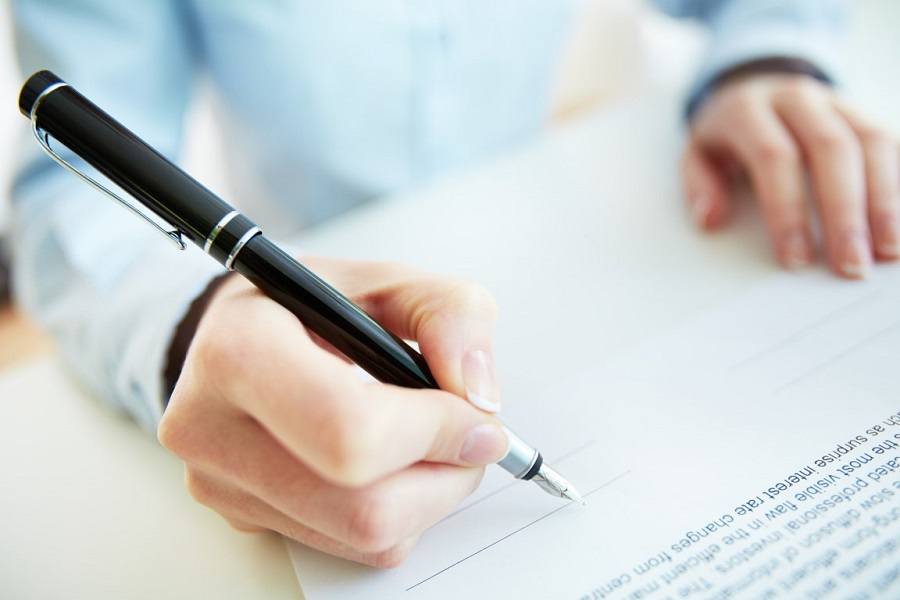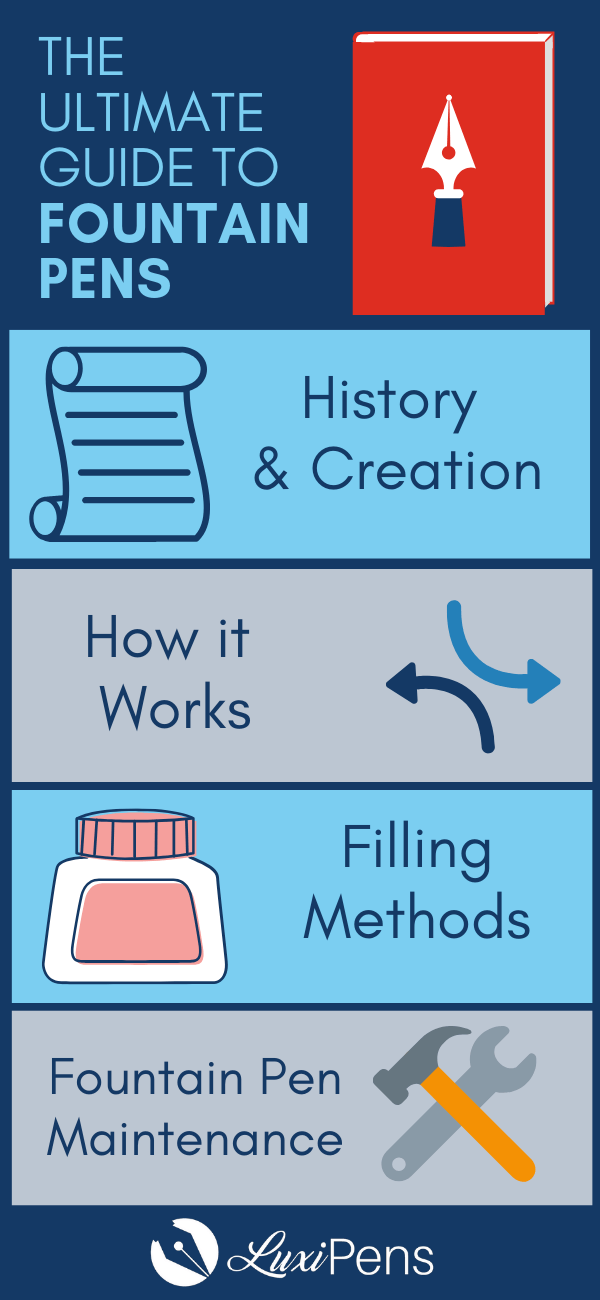At times, it feels relaxing to take a break from your clacking keyboard to write out something with your hands, such as a thank you note or a letter. It can be a unique and pleasurable activity.
Some things can improve this pleasurable experience like quality stationery or a fine journal. Fountain pens can make writing a memorable experience.
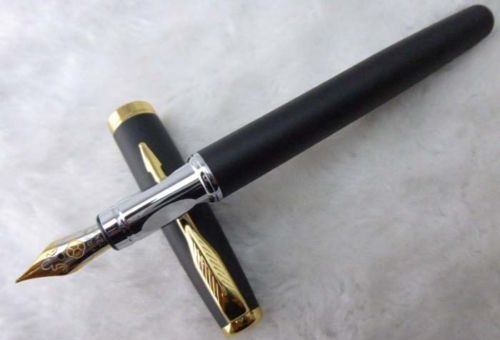
Putting aside your ballpoint in favor of a fountain pen is similar to switching from a cartridge razor to a straight or safety razor for shaving purpose. The use of fountain pens requires more attention and skill on the part of a writer; however, the results are richer and sharper.
What Is A Fountain Pen?
Fountain pens are writing instruments fitted with metal nibs (often made of solid gold or stainless steel) that use converters, cartridges or other internal reservoirs to provide a refillable and continuous supply of ink. Fountain pens draw ink from their reservoirs via a feed to their nibs and deposit it on paper through a mix of capillary action and gravity.
You can fill ink in the reservoir manually through the use of a syringe or eyedropper or through the pen’s filling mechanism which uses suction for transferring ink to the reservoir.
Interested in learning more about how these quality writing instruments got their name?
Be sure to review our article, "Why is a Fountain Pen Called a Fountain Pen?".
History And Use Today
Although early records of pens similar to fountain pens date as far back as the tenth century, the fountain pens we are familiar with today did not exist until the nineteenth century.
Lewis Waterman, an American, patented the initial model of a fountain pen in 1884. Before his version, fountain pens had gained a bad reputation because of issues such as blots and ink spills and were considered inconvenient and unreliable. The main issue that plagued fountain pens in that era was related to the lack of airflow.
Waterman was able to solve this issue by making three fissures in the fountain pen’s feed. This development helped create a capillary mechanism that worked well by drawing ink effectively into smaller channels while the air returned over these fissures, entering the pen’s reservoir.
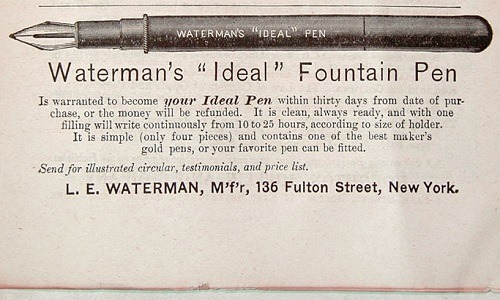
Ease of use and portability of fountain pens made them one of the most admired writing instruments throughout the 20th century. Fountain pens did not lose their appeal in Asia and Europe, while in the 1970's their interest reemerged in the US too. This lead to another golden age for fountain pens.
From routine writing instruments to more hand-crafted and refined ones, a fountain pen remains an important writing tool in today’s generation. Today, many artists, business professionals, pen enthusiasts, and calligraphers prefer a fountain pen over any other writing instrument.
How Does A Fountain Pen Work?
The design of a fountain pen is gracefully simple. It has three major elements which are the nib, filling system and feed.
Nib
It is the tip of a fountain pen that is made of metal and touches the paper. In the past, a nib of the fountain pen was made of gold because it is flexible and resists corrosion. On the other hand, most contemporary nibs comprise gold alloys or stainless steel due to their durability and strength.
If the nib of a fountain pen comprises of pure gold, the tip will contain heavy-duty metals, such as platinum or iridium. In contrast, a steel nib has a tough tip, so it is not necessary to tip it with any another metal. A small slit near the center of the pen’s nib brings the ink to the tip using the capillary action.
You will often notice a hole at the top of a nib which brings airflow to the pen’s reservoir to prevent the formation of a vacuum. This hole also provides a structural function by working to relieve stress. This design prevents the nib from getting cracked due to the frequent flexing that happens during use.
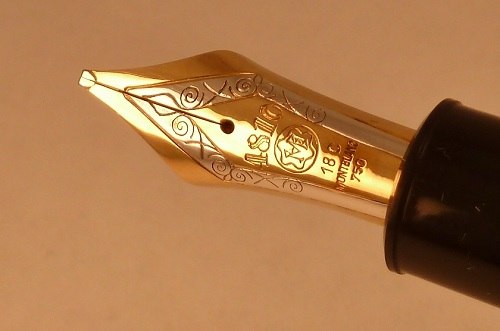
Nibs of a fountain pen come in a variety of grades and tip shapes. The three basic and familiar shapes are the stub, round and italic. Among these three, round shape is the most common as it offers a very uniform line on paper. On the other hand, italic and stub nibs feature heavily in calligraphy.
Nib grades are used to denote the tip size. There are five common grades of nibs. These include fine (F), extra fine (EF), medium (M), double broad (BB) and broad (B). Among these five, extra fine and fine are the most familiar nib grades.
Feed
The feed of a fountain pen comprises a piece of black plastic (ebonite in the case of most antique pens). This plastic piece touches the nib’s bottom. It may not seem that way, but the feed is usually the most vital element in most fountain pens.
The reason for this is that it provides a route through which the ink travels to the nib from the reservoir. Also, air enters the reservoir through this route.
Ever since Lewis Waterman patented the design of the feed in 1884, fountain pen manufacturers have worked hard to develop more efficient, and better pen feeds. The Parker Company, in 1941, launched the most notable feed upgrade by the addition of a collector to the pen’s feed.
On the majority of our contemporary fountain pens, this collector is visible as a set of fins or grooves just underneath the nib. The collector also serves as an additional reservoir to ensure the nib receives an adequate supply of ink and at the same time also prevents the overflow of ink.
Filling Mechanism Or Reservoir
The reservoir or filling system is a hollow space inside a fountain pen that is used to hold the ink. This component of a fountain pen has witnessed plenty of innovation during the period of the fountain pen’s evolution.

Although there are different kinds of filling systems or reservoirs that you are likely to find on a lot of antique fountain pens, we are going to consider some of the common ones you will find on most modern fountain pen models.
Cartridge
A cartridge is one of the most common types of filling systems found in today’s fountain pens. It is a tiny and sealed plastic tube (usually disposable) that contains the ink in a fountain pen. If you find that your cartridge has run out of ink, you can remove your old cartridge and replace it with a new one.
The key benefit of using cartridges as reservoirs is their convenience. However, there is a downside because you are often dependent on a specialized cartridge designed for your brand of fountain pen.
As a result, your choice of ink is likely to be much limited. Also, there is a cost factor. Although most cartridges are not very expensive, it is better to refill your fountain pen on your own because it is more cost-effective in the long run.
Converter
In case you are not content with the idea of buying a new cartridge each time your pen runs out of ink, you also have the option of purchasing a converter for the fountain pen.
A converter tends to look very similar to a cartridge and can easily fit a majority of cartridge pens. The benefit of using a converter is that its filling system lets you refill the ink when your pen runs out of ink.

The upside to a converter is that you can use a variety of different inks; however, the drawback is the lack of convenience. Although it is not difficult to refill your converter, it certainly involves a lot more hassle when you compare it with a cartridge that you can replace easily with a new one.
Built-In Filling System
Instead of needing a separate cartridge or converter, many fountain pens use a built-in filling system. These systems are very convenient as they allow users to refill them directly from an ink bottle. There are two basic kinds of filling systems built in fountain pens: vacuum and piston.
Fountain pens equipped with built-in filling systems tend to have much greater ink capacity compared to converter or cartridge filled pens as the whole barrel of the fountain pen can hold ink. They also provide writers the luxury of choosing different types of ink. However, the main drawback is that these fountain pens are very pricey.
Eyedropper
Eyedropper fountain pens are those that have a barrel which you can refill with ink with the use of a syringe, eyedropper or pipette. A majority of earlier pens featured an eyedropper as a reservoir, and it was the only way to fill them.
In contrast, these days, most eyedropper fountain pens are in fact cartridge pens that accommodate an eyedropper to increase the ink capacity.
Eyedropper fountain pens usually have bigger ink capacity as there is no space wastage due to separate components. Moreover, you can choose from different varieties of inks along with different colors if you use an eyedropper pen.
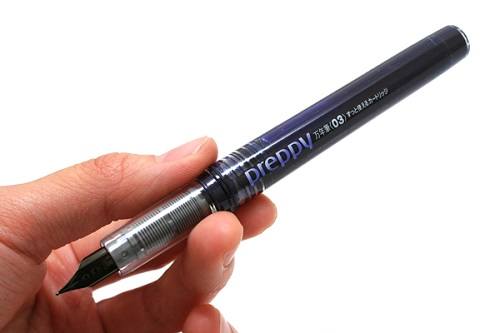
However, using an eyedropper pen is less portable and convenient as it needs different materials such as silicone grease and bottled ink. Filling these pens is more leak-prone compared to converter pens.
Ink
As most fountain pens today function by capillary action, they almost exclusively use dye-based inks. On the other hand, pigment-based inks usually clog the pen’s narrow passages because they have solid particles of pigment in a liquid solution. Although you may find a few pigmented inks for your fountain pen, they are not common.
An ideal ink for fountain pens should be free of sediment, free-flowing and non-corrosive. However, these qualities are often compromised in favor of manufacturability, permanence and to make use of some commonly available dyes.
Our article "How to Put Ink in a Fountain Pen" provides a through explanation of each refill method.
Why Write With A Fountain Pen?
There are many reasons to try a fountain pen. Here are a few of them:
Using The Pen Feels Better
As you do not need to press down a fountain pen very hard to write, writing with it tends to be a lot easier on your hand which is not the case with most ballpoint pens. You can write for long periods of time with a fountain pen without fatigue, and getting in the flow is much easier as the instrument flows well.
Better For The Environment
With ballpoint pens, once you run out of ink, you will have to discard them. Although you may buy a disposable fountain pen, a majority of fountain pens are not meant to be tossed away in the trash can. Whenever you are short on ink, all you have to do is refill their reservoirs, and you're good to go.
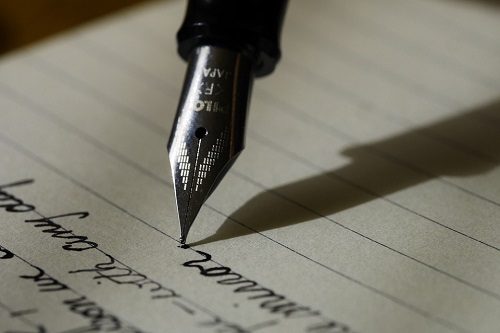
More Economical
Ballpoint pens have a disposable nature, so people tend to be very careless with them. The reason for this is that they are cheap and you can buy another, which often leads to waste of money.
However, there is something special about fountain pens that urges you to care for them. Although one reason is their high price tag, fountain pens have a tradition that exudes an aura of permanence and timelessness that entices the owner to protect them more. Their only recurring expense is ink which makes them cheaper in the long run.
Better And Elegant Handwriting
Apart from helping reduce fatigue, the flowing movement and light touch that are required by fountain pens make the handwriting better and superior.
How To Hold And Write With A Fountain Pen
Place the cap of the pen on its end when you are writing. Your fountain pen must make an angle of forty to fifty degrees with the page. At this angle, the ink will flow easily.
Unlike a ballpoint pen, you do not have to press down hard on a fountain pen to get the ink flowing. Extra pressure may prevent the free flow of ink or even damage the pen's nib. So, go with light strokes.
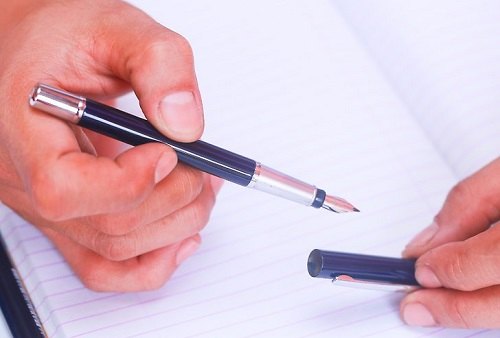
Most people move their fingers for writing. Finger writing can cause you to exert extra pressure on your pen, which can rotate it and lead to ink flow issues. Instead, concentrate on the use of your arm and shoulder more when you write.
How To Care For A Fountain Pen
Keep your pen capped when it is not in use. This practice will help prevent the ink on the pen's nib from drying up and protect its nib from any damage. If the ink dries up, soak the nib, and it will solve the problem.
With regular use, the nib of your pen will become accustomed to your specific writing style. If you loan it to somebody else for long periods, they will force their unique style on it, and the nib may get distorted. So, do not let others borrow it for long periods.
It is a good practice to flush your fountain pen at least once every month. It will ensure adequate ink flow by getting rid of any build-up in the pen’s feed or nib.
Manufacturers
There are many fountain pen makers in the market; some of the leading brands include:
Montblanc
It is one of the best fountain pen brands in the world. The company's products are known for their exquisite craftsmanship, superb writing freedom, and excellence. Not only do they deliver great performance the fountain pens look stunning and are available in a variety of colors. Most of their pens come with a piston converter. Read our review on the Montblanc 1912 fountain pen.
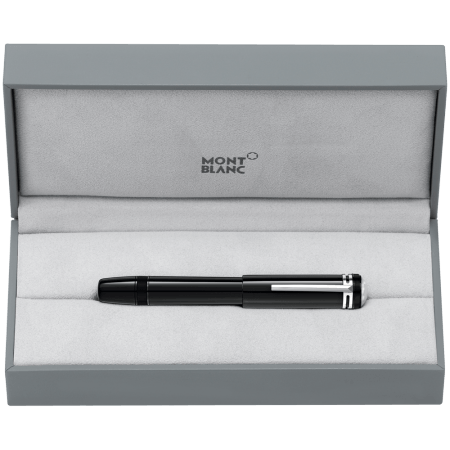
Parker
Parker fountain pens are known for their sleek and contemporary design. The company uses top-notch materials to produce high quality and beautiful looking writing instruments.
Parker's products are a range of new, sophisticated and hybrid writing instruments that will delight users for many years into the future. The pens not only look sleek, but they are also durable and prevent corrosion and denting. You can read our review of the Parker Duofold Centennial review here.
Pilot
Pilot is another leading fountain pen maker. Most of the company's products have a classic and unique design and use a piston reservoir for ink storage. Their pens have an attractive design and are especially known for their fantastic nibs. Also, different models of pen are available in a variety of colors. Their products are famous among drawers and calligraphers. Be sure to read our review of the Pilot Custom Heritage 91 fountain pen.
Tips For Improving Your Handwriting
You can improve your handwriting in many different ways. These include:
- Use a loose grip on your fountain pen while you are writing. The reason for this is that a tight grip can lead to some adverse effects. Firstly, it can lead to fatigue as your hand will get cramped and tired quite quickly. A tight or rigid grip can also change how your writing appears on a page. If you want to have consistent and fluid penmanship, then loosen your grip.
- When you write, use your favorite writing style. We recommend that you choose your favorite, whether it is print, cursive, or a mix of both. Keep practicing until you are content with the style.
- It is difficult to notice the details in a small font; therefore, begin with writing a bit larger compared to your normal handwriting. It will help you spot mistakes more quickly and easily. You can shrink the writing back to its normal size when you are happy with the results.
- Another option is to experiment with the position of the paper, especially if the slant is off. In this case, the letters will look narrow, or you will have difficulty following the page lines. Changing the position of the paper can be helpful in this regard.
Myths About Fountain Pens Busted
There are many myths and legends about fountain pens; here we will debunk a few of them.
Most people think that fountain pens leak, which is just not true as a good fountain pen won't leak. Most people often get this impression because they think these pens are delicate and contain water-based ink. These leakages were common in earlier days but not now.
Another myth is that you need plenty of practice to write with fountain pens. You can write how you normally do, just keep the shinier side of your nib up and do not press very hard on the pen. Training is necessary for italic calligraphy fountain pens, but they are not optimal for routine writing.
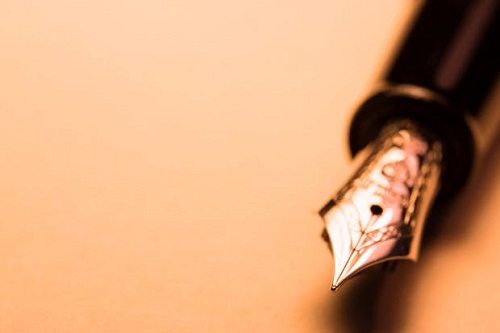
Most people assume that fresh ink is necessary for writing with a fountain pen, which is also not true. If there are no solids or mold in your old ink bottle, it will do just fine.
Finally, many people believe that fountain pens can slow down their writing speed. There is no design aspect of a fountain pen that can slow it down as compared to other pens.
Conclusion
In this guide to fountain pens, we have discussed what a fountain pen is, along with its brief history. We have looked at how a fountain pen works, and its main components, such as nib feeds and filling systems. We have also highlighted the several benefits of writing with a fountain pen.
We have also discussed a few maintenance tips to increase the life of your pen, as well as the top manufacturers of fountain pens.
Finally, we have given some useful tips for improving handwriting with a fountain pen and debunked many common myths relating to fountain pens and their use. Our buying guide will discuss the different features that you should consider when buying a fountain pen along with some recommendations.

